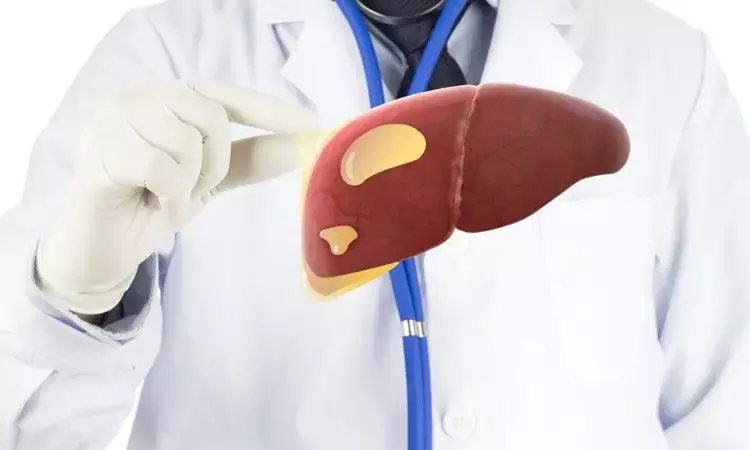- Home
- Medical news & Guidelines
- Anesthesiology
- Cardiology and CTVS
- Critical Care
- Dentistry
- Dermatology
- Diabetes and Endocrinology
- ENT
- Gastroenterology
- Medicine
- Nephrology
- Neurology
- Obstretics-Gynaecology
- Oncology
- Ophthalmology
- Orthopaedics
- Pediatrics-Neonatology
- Psychiatry
- Pulmonology
- Radiology
- Surgery
- Urology
- Laboratory Medicine
- Diet
- Nursing
- Paramedical
- Physiotherapy
- Health news
- Fact Check
- Bone Health Fact Check
- Brain Health Fact Check
- Cancer Related Fact Check
- Child Care Fact Check
- Dental and oral health fact check
- Diabetes and metabolic health fact check
- Diet and Nutrition Fact Check
- Eye and ENT Care Fact Check
- Fitness fact check
- Gut health fact check
- Heart health fact check
- Kidney health fact check
- Medical education fact check
- Men's health fact check
- Respiratory fact check
- Skin and hair care fact check
- Vaccine and Immunization fact check
- Women's health fact check
- AYUSH
- State News
- Andaman and Nicobar Islands
- Andhra Pradesh
- Arunachal Pradesh
- Assam
- Bihar
- Chandigarh
- Chattisgarh
- Dadra and Nagar Haveli
- Daman and Diu
- Delhi
- Goa
- Gujarat
- Haryana
- Himachal Pradesh
- Jammu & Kashmir
- Jharkhand
- Karnataka
- Kerala
- Ladakh
- Lakshadweep
- Madhya Pradesh
- Maharashtra
- Manipur
- Meghalaya
- Mizoram
- Nagaland
- Odisha
- Puducherry
- Punjab
- Rajasthan
- Sikkim
- Tamil Nadu
- Telangana
- Tripura
- Uttar Pradesh
- Uttrakhand
- West Bengal
- Medical Education
- Industry
Complex Interplay Between T2D and MASH: Key Drivers and Emerging Treatment Strategies

A recent study suggested that metabolic-associated steatohepatitis can be managed by a multifaceted approach that includes diabetes-related lifestyle modifications, weight loss, and pharmacological management. The study was published in the journal Diabetes Research and Clinical Practice.
Nonalcoholic fatty liver disease (NAFLD) renamed and redefined as metabolic dysfunction-associated steatotic liver disease (MASLD) is one of the most common non-communicable and global chronic liver diseases. Metabolic dysfunction-associated steatohepatitis (MASH) is the second leading cause of end-stage liver disease occurring due to metabolic imbalances and insulin resistance. There is limited data on the awareness and the potential prognostic implications of MASLD and MASH. Hence, researchers described the multifactorial pathways, the potential complications, and the various management methods in a detailed review.
Risk factors:
- Obesity and visceral adiposity marked by Increased waist circumference and the waist-to-hip ratio are some of the risk factors for MASH.
- Genetic polymorphisms of PNPLA3, TM6SF2, and MBOAT7 have also been implicated.
- A diet containing high fructose, low fiber, high fat, and alcohol are some of the risk factors that can cause intestinal dysbiosis and trigger diabetes-related MASH progression.
- Dyslipidemia and gut dysbiosis are also factors implicated.
Prevalence:
- Studies have shown that diabetics have an increased predisposition to develop advanced fibrosis and MASH.
- A higher cumulative incidence of fibrosis was seen in diabetics over non-diabetics in due course of time.
Progression:
- An interplay between extrahepatic and intrahepatic factors plays a crucial role in diabetes-related MASH progress.
- These include the high-fat diets that trigger intestinal dysbiosis, altered intestinal permeability, altered secretion of adipokines, lipid overload, and proinflammatory cytokines all of which can accelerate hepatic lipid accumulation in MASH.
Therapeutic management:
- The treatment strategies for MASLD or MASH aim to slow down the disease progression, target diabetes complications, reduce morbidity and mortality.
- Lifestyle modifications, anti-diabetic drugs, thiazolidinediones, SGLT2 inhibitors, Dipeptidyl peptidase-4 (DPP4) inhibitors (DPP4i), Incretin mimetics and co-agonists, thyroid hormone receptor β agonists, and combination therapies have played a crucial role in the management of MASH.
Thus, the study concluded that MASH is a complex condition driven by visceral fat expansion, altered gut microbiota, insulin resistance, increased liver fat, and stress. Lifestyle changes, weight loss, and pharmacology are the multifaceted ways of managing MASH. However, large-scale trials are needed to assess the long-term efficacy.
Further reading: Gancheva S, Roden M, Castera L. Diabetes as a risk factor for MASH progression. Diabetes Res Clin Pract. Published online September 6, 2024. doi:10.1016/j.diabres.2024.111846
BDS, MDS
Dr.Niharika Harsha B (BDS,MDS) completed her BDS from Govt Dental College, Hyderabad and MDS from Dr.NTR University of health sciences(Now Kaloji Rao University). She has 4 years of private dental practice and worked for 2 years as Consultant Oral Radiologist at a Dental Imaging Centre in Hyderabad. She worked as Research Assistant and scientific writer in the development of Oral Anti cancer screening device with her seniors. She has a deep intriguing wish in writing highly engaging, captivating and informative medical content for a wider audience. She can be contacted at editorial@medicaldialogues.in.
Dr Kamal Kant Kohli-MBBS, DTCD- a chest specialist with more than 30 years of practice and a flair for writing clinical articles, Dr Kamal Kant Kohli joined Medical Dialogues as a Chief Editor of Medical News. Besides writing articles, as an editor, he proofreads and verifies all the medical content published on Medical Dialogues including those coming from journals, studies,medical conferences,guidelines etc. Email: drkohli@medicaldialogues.in. Contact no. 011-43720751




